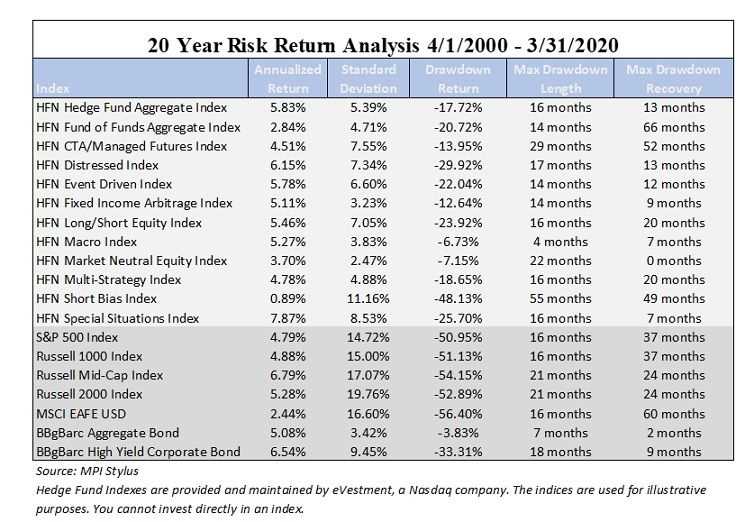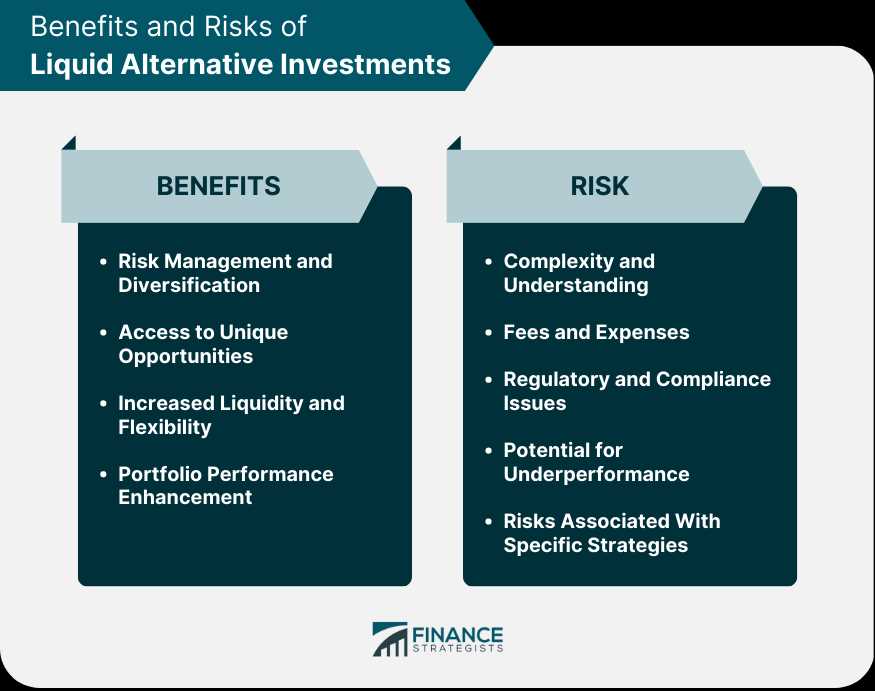Definition of Liquid Alternatives
Unlike traditional investments, which are typically traded on public exchanges and have daily liquidity, liquid alternatives are often structured as privately offered investment funds. This means that they are not subject to the same regulatory requirements and reporting obligations as publicly traded securities.
Liquid alternatives can include a wide range of investment strategies, such as hedge funds, private equity, real estate, commodities, and managed futures. These strategies often involve complex investment techniques and may utilize derivatives, leverage, and short-selling to generate returns.
The primary goal of liquid alternatives is to provide investors with diversification and potential for higher returns compared to traditional investments. By investing in alternative asset classes and strategies, investors can potentially reduce their exposure to traditional market risks and enhance their overall portfolio performance.
However, it is important to note that liquid alternatives are not suitable for all investors. They are typically considered to be higher risk investments due to their complex nature and potential for higher volatility. Additionally, the lack of regulatory oversight and transparency can make it difficult for investors to fully understand and assess the risks associated with these investments.
Investors considering liquid alternatives should carefully evaluate their investment objectives, risk tolerance, and financial situation before investing. It is also recommended to consult with a qualified financial advisor who can provide guidance and help assess the suitability of these investments.
In summary, liquid alternatives are investment vehicles that provide access to alternative asset classes and investment strategies. They offer potential diversification and higher returns compared to traditional investments, but also come with higher risks and complexity. Investors should carefully consider their investment goals and seek professional advice before investing in liquid alternatives.
Purposes of Liquid Alternatives

1. Diversification
One of the main purposes of liquid alternatives is to provide diversification to an investor’s portfolio. Traditional investments such as stocks and bonds are subject to market fluctuations and can be highly correlated with each other. Liquid alternatives offer a way to invest in non-traditional assets or strategies that have the potential to perform differently from traditional investments. By adding liquid alternatives to a portfolio, investors can potentially reduce risk and increase the likelihood of achieving their investment goals.
2. Risk Management
Liquid alternatives can also be used as a risk management tool. These investments often have lower correlation with traditional asset classes, meaning they may perform well when other investments are underperforming. By including liquid alternatives in a portfolio, investors can potentially reduce the overall volatility of their portfolio and mitigate the impact of market downturns.
3. Enhanced Returns
Another purpose of liquid alternatives is to enhance returns. These investments have the potential to generate higher returns compared to traditional investments, although they also come with higher risks. Liquid alternatives often employ more complex strategies, such as long-short equity, global macro, or event-driven investing, which can take advantage of market inefficiencies and generate alpha. By including liquid alternatives in a portfolio, investors can potentially increase their overall returns and improve their investment performance.
4. Access to Alternative Asset Classes
Liquid alternatives provide investors with access to alternative asset classes that may not be available through traditional investments. These asset classes can include commodities, real estate, infrastructure, private equity, and hedge funds. By investing in liquid alternatives, investors can diversify their portfolios and potentially benefit from the unique characteristics and potential returns of these alternative asset classes.
5. Tailored Investment Solutions

Liquid alternatives also offer investors the opportunity to tailor their investment solutions to their specific needs and goals. These investments often come in various structures, such as mutual funds, exchange-traded funds (ETFs), or separately managed accounts (SMAs), allowing investors to choose the structure that best fits their investment preferences and objectives. Additionally, liquid alternatives can be used to achieve specific investment strategies, such as hedging against inflation, generating income, or capital appreciation.
Risks Associated with Liquid Alternatives

Investing in liquid alternatives carries certain risks that investors should be aware of. While these investment vehicles can offer potential benefits, they also come with their own set of risks. Here are some of the key risks associated with liquid alternatives:
| Risk | Description |
|---|---|
| Market Risk | Like any investment, liquid alternatives are subject to market risk. This means that the value of the investment can fluctuate based on changes in market conditions. If the market experiences a downturn, the value of the investment may decrease. |
| Liquidity Risk | While liquid alternatives are designed to offer liquidity, there can still be liquidity risk involved. In times of market stress or during periods of high redemption requests, it may be difficult to sell the investment or access your funds in a timely manner. This can result in potential losses or delays in accessing your investment. |
| Manager Risk | The success of a liquid alternative investment often depends on the skill and expertise of the fund manager. If the manager makes poor investment decisions or fails to effectively manage the fund, it can negatively impact the performance of the investment. |
| Counterparty Risk | Some liquid alternatives may involve transactions with counterparties, such as derivatives or swaps. There is a risk that the counterparty may default on their obligations, which can result in losses for the investor. |
| Regulatory Risk | Regulatory changes or new regulations can impact the operations and performance of liquid alternatives. Changes in tax laws, reporting requirements, or other regulations can affect the investment’s returns or increase compliance costs. |
| Complexity Risk | Some liquid alternatives can be complex in nature, involving strategies or instruments that may be difficult to understand. This complexity can make it challenging for investors to fully grasp the risks involved and make informed investment decisions. |
It is important for investors to carefully consider these risks and assess whether liquid alternatives align with their investment objectives and risk tolerance. Consulting with a financial advisor or conducting thorough research can help investors make informed decisions and mitigate potential risks.

Emily Bibb simplifies finance through bestselling books and articles, bridging complex concepts for everyday understanding. Engaging audiences via social media, she shares insights for financial success. Active in seminars and philanthropy, Bibb aims to create a more financially informed society, driven by her passion for empowering others.
